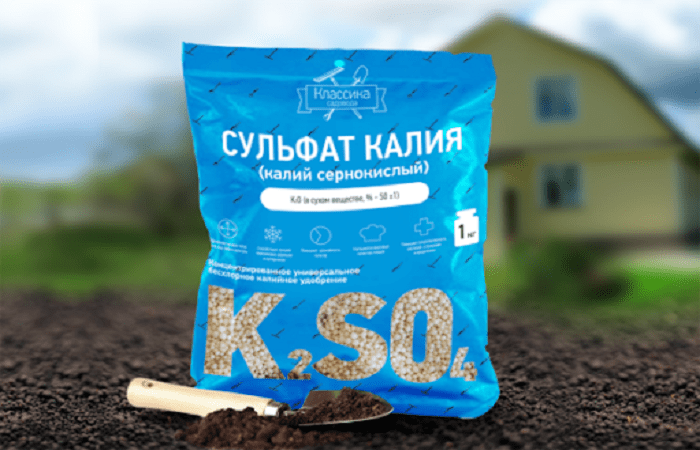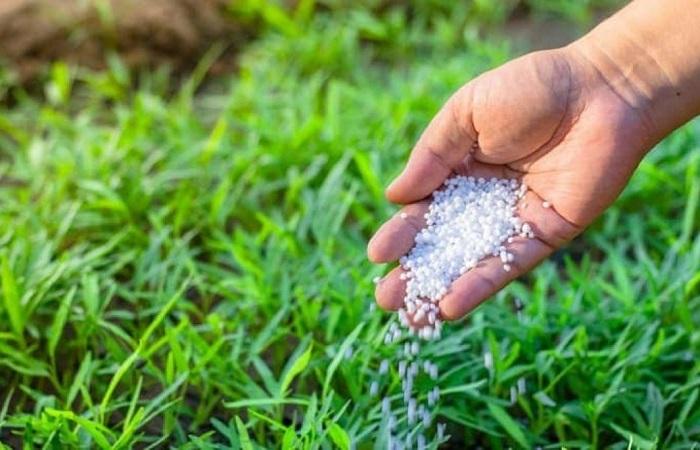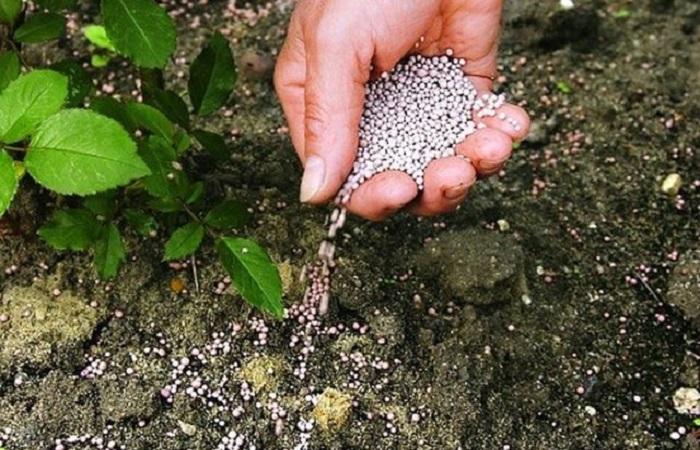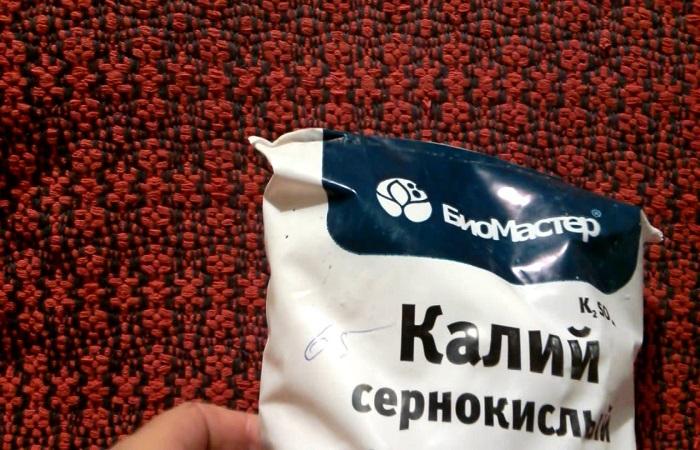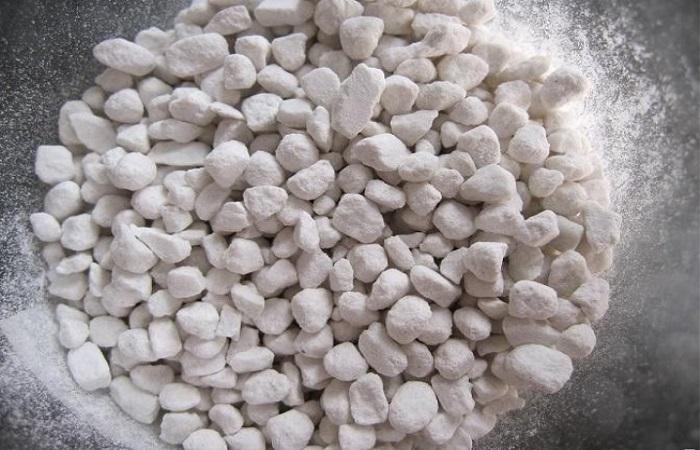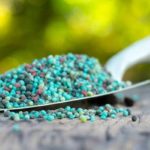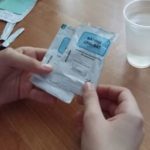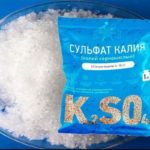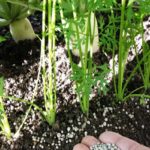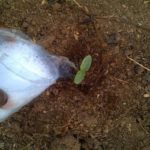Potash fertilizers supply plants with the most important nutrient – potassium. Their application is necessary when growing any crop. Let's consider the rules for using potassium sulfate, dry and liquid application, application on different types of soil, foliar application. Compatibility of fertilizer with other agricultural products, storage, analogues, differences from potassium sulphide.
What it is?
Potassium sulfate refers to potassium fertilizers, nitrogen-free and chlorine-free.Since it does not contain nitrogen, it is, for the most part, suitable for feeding plants in the fall, towards the end of the growing season. This is the only fertilizer that can be used to feed onions in the last month of their growth.
Potassium sulfate is an affordable and widespread fertilizer. You can buy it in gardening stores; it is sold in packages of 0.5-5 kg. It appears to be a white fine powder with a crystalline structure. The fertilizer contains 45-52% nitrogen and 18% sulfur. There are small impurities of magnesium and calcium, as well as other elements that do not have any effect on the properties of the substance or fertilizer.
Potassium sulfide affects the synthesis of proteins, vitamins and enzymes. The element potassium improves the resistance of plants to fungi, drought, cold weather, and helps them use moisture more rationally. It affects the ripening of fruits, increases the content of starch and pectin compounds, makes the color of berries and fruits brighter, richer, and improves taste. Sulfur affects the metabolism and transport of substances and is included in proteins and amino acids.
Terms of use
Potassium sulfate can be applied to crops in powder form, that is, in dry form, or a solution can be prepared for irrigation. It is used to enrich the soil in greenhouses and open beds, to stimulate the growth and active fruiting of garden crops.
Dry application
Potassium sulfate is characterized by good solubility; it can dissolve in the soil upon contact with moisture, so the powder can be applied dry, it is not necessary to dilute it. The powder is scattered over the site in spring or autumn when digging, into holes and grooves, and into planting holes during planting. In summer, dry sulfate can be applied between rows of beds when growing vegetables. Dosage per sq. m.is 15-35 g for different vegetable crops and up to 150 g for an adult fruit tree.
Liquid dilution for irrigation
Potassium sulfate (another name for potassium sulfate) fertilizes crops grown in beds and in greenhouse soil. According to the instructions, the solution consumption per hectare for root feeding is 200-400 l, the dosage is 20-30 g per 10 l. The last application should be made no later than 2 weeks before harvesting. The method of applying liquid fertilizer can be any: the solution is poured under the roots on the beds or poured into a drip irrigation system.
If you need to quickly feed a large tree with fertilizer, you should make inclined vertical holes in the ground up to 0.5 m long in the root zone. Pour the fertilizer solution into them. This method is convenient because the mixture goes directly to the roots, and the plant can quickly absorb it.
Application on different soils
The fertilizer can be used on all types of soil, neutral or acidic. But the behavior of potassium sulfate is influenced by the composition of the soil: on sandy soil it easily penetrates downwards, on clayey soil it lingers at the top. In heavy soils, the powder must be applied to the depth at which the plant roots are located. The best time for application on heavy soils is autumn, on light soils, on the contrary, spring. In addition, sulfate can be used in the garden during the season.
Spraying stems and leaves
For foliar spraying, potassium sulfate is diluted in water and the solution is sprayed on the plants on the leaves and stems. Dosage – 1-2 g per 1 l, consumption – until the leaf surface is completely wetted. This substance is pure, leaves almost no sediment, the solution can be poured into the sprayer tank, it does not clog the nozzles.
Security measures
In terms of toxicity, potassium sulfide belongs to class 3 agents. This is how low-toxic drugs are defined, poisoning with which almost never occurs (except for the drug entering the body in small doses during prolonged contact). When working with the substance, you need to wear gloves, goggles and a respirator. They are necessary because dust getting into the eyes, skin or respiratory tract can cause irritation.
Wash off any powder or solution that gets on the skin with water. If it gets into your eyes, you should also rinse them with water. If it gets into the stomach, you need to rinse: drink 1 liter of clean warm water and 6-7 pcs. activated carbon tablets.
Compatibility with other fertilizers
It can be combined with phosphate fertilizers; when mixed with superphosphate, it is better absorbed and provides more benefits than when used separately. It can also be mixed with nitrogen fertilizers, except for urea, but the mixture for feeding must be prepared just before application and not stored.
Do not mix potassium sulfate with chalk; it can be replaced with lime, especially on acidic soils. Do not mix it with organic fertilizers, manure or compost.
How to store
The powder does not cake during long-term storage, but can absorb moisture, so it should only be kept in a dry place, in a closed package. You can put other drugs or agricultural products next to the fertilizer, but it is not allowed to store and store food, feed and household products. It is necessary to limit access to fertilizer to children and animals.
The shelf life of potassium sulfate is 5 years, but under good storage conditions it retains its properties much longer, so if the powder has not gotten wet or changed color or appearance, it can also be used. The finished solution can be stored without losing its properties for more than a month, so if there is excess left, this volume can be used next time.
Analogs
Potassium sulfate can be replaced in the garden with various potassium fertilizers, for example, potassium chloride and chlorine-free substances - potassium nitrate, potassium magnesium. They contain potassium in different percentages and also include other elements. In private households, potassium sulfate can be replaced with ash, which will become not only a source of potassium, but also other elements. Only the ash left from burning wood and plant residues is suitable for feeding. Coal coal is not suitable.
What is the difference between potassium sulfate and potassium sulfate?
These are different names for the same substance and fertilizer. There is no difference if you purchase fertilizers under these names - their purpose, dosage and consumption will be the same.
Potassium sulfate is a widely used fertilizer; it is used both in fields and in private gardens, as well as for feeding indoor flowers. Does not contain chlorine, therefore it is approved for use for all crops.Fertilizer increases the content of vitamins and carbohydrates in the products obtained from plants fed with it.
When feeding fruit and berry plants in early autumn, they overwinter better. It can also be used for replenishment in the spring and throughout the season, at certain intervals. Potassium sulfate does not contain chlorine, so it is often chosen for feeding crops that do not tolerate it: grapes, nightshades, citrus fruits. Sulfur will be useful for crops from the legume and cruciferous families.
After fertilizing with potassium sulfate, the quality of the fruits, their taste, and the amount of sugars, starch, and vitamins they contain improves. They become more resistant to rot and other infections that spoil fruits in storage.

